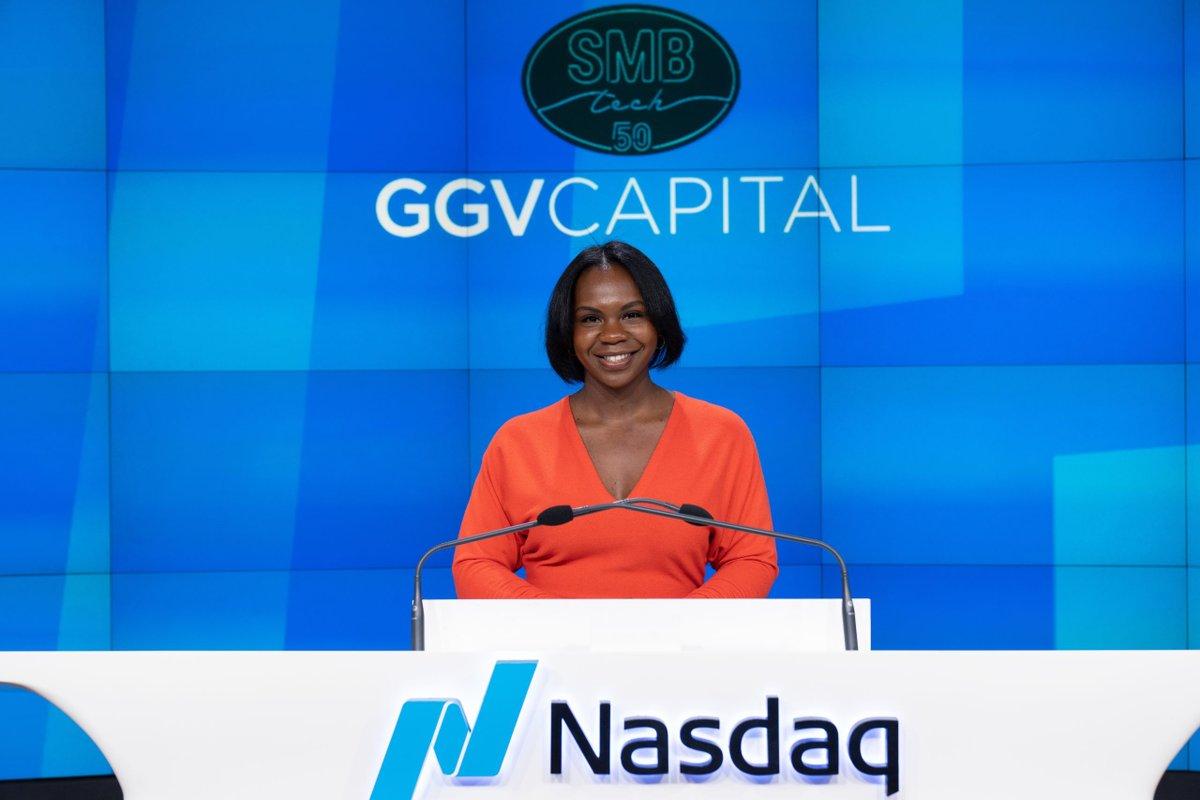From the neighborhood pizza parlor to the local preschool and corner barbershop, small and medium-sized businesses fuel the American economy — they’re responsible for more than 40% of U.S. GDP and about half of U.S. employment. Globally, they contribute to about 70% of jobs and GDP.
Despite record inflation and labor shortages, the most resilient SMB owners continue to adapt to a changing world. As we predicted in fall 2020, the revival of the U.S. economy is being led by small businesses, and many of them are new businesses launched since the pandemic began. In 2022 alone, more than 5 million new small business applications were filed — making it the second-most popular year on record since 2004. (The record is held by 2021’s 5.4 million applications.)
The entrepreneurial momentum is continuing:
- According to U.S. Census Bureau data, business applications in March 2023 showed an increase of 4.5% compared to February 2023. Projected business formations saw an increase of 5.4% for the same time period.
- Note this jump compared to fall 2022, when business applications for October 2022 showed an increase of 1.2% (compared to September 2022) and projected business formations saw an increase of 1.6%.
From the ashes of a pandemic, a phoenix is rising for SMBs. Against the backdrop of an ever-changing macro environment, there are three promising signals we’re tracking as investors in SMBTech — the technology that supports and enables SMBs in the digital era:
- The Fed’s efforts to tame inflation are starting to work, specifically in areas like food and transportation costs that directly impact SMBs. (In March, inflation cooled to 5%, its lowest level in nearly two years.)
- Labor is returning to the workforce after years of concerns over health safety (COVID-19) and pandemic stimulus checks.
- The 33.2 million SMBs in America account for nearly half of the roughly $370 billion in overall tech spending. SMBs also typically outspend large enterprise accounts in some technology segments, such as telecom and electronic devices.
Together, these trends form a foundation on which startup founders can build efficiency-boosting solutions for SMBs.
Creating solutions for small business owners
For the SMBs that survived the pandemic and the millions of new businesses launched between 2020-2023, the tools, technology and financing options available have never been greater.
A decade ago, technology solutions for small businesses were extremely limited, if available at all. Over the past decade, public SMBTech companies such as Atlassian, Dropbox, Etsy, Intuit, Monday.com, Ring Central, Shopify, Toast and Zoom have helped millions of SMB owners scale their businesses in ways that rival their larger competitors.
These days, a business owner can literally launch a website over the weekend on Wix, set up an e-commerce store on Shopify or BigCommerce*, enable payments via Square* or Stripe, and establish payroll and employee communication via Homebase* (millions of SMBs are on these platforms already today).
Businesses can also leverage a myriad of channels — including Facebook, Instagram and/or TikTok — to launch marketing services. It’s easy to forget that none of this existed a decade ago or, if it did, it was too unwieldy or expensive for SMB owners. Today, about 38% of small businesses use specialized software in their business operations, according to the Small Business Administration.
By riding the wave of new business applications in this era, business owners who adopt SMBTech now have the potential to thrive like never before. The result? Businesses that grow faster are more profitable and ultimately create a better experience for customers and employees.

Celebrating the second annual SMBTech 50
At GGV Capital, we believe SMBs power the economy, and SMBTech powers these SMBs. For the second year, GGV Capital collaborated with 30 venture capital firms to select the SMBTech 50, a list that celebrates the achievements — and potential — of startups that serve small and medium-sized businesses.
Of the 50 private companies on the 2023 list:
- 18 are repeat SMBTech 50 honorees (including four from GGV’s portfolio: Brightwheel*, Drata*, Electric* and Homebase*).
- 32 are new for 2023, including Carta, Coast, GlossGenius, Heard, Human Interest,Linear, Papaya Global, Patreon, Rippling, Stripe and Wrapbook.
- 11 also show up on the inaugural Embedded Fintech 50, a list highlighting the rising stars in fintech innovation — this includes Alloy, Mercury, Merge and Ramp.
Other interesting facts about this year’s list:
- SMBTech 50 honorees have raised a cumulative $22 billion in financing, including some of the largest pre-IPO rounds in the past year.
- 26 companies have each raised more than $100 million.
- 64% of the honorees raised a new round in the past 12 months.
- The HRTech sub-sector had the most new entrants with fintech and vertical SaaS having the most entrants overall (similar to 2022).
In late April, founders and leaders from this year’s SMBTech 50 celebrated the momentum in this sector by ringing the opening bell at the Nasdaq MarketSite in New York City. We’re thrilled to recognize these 50 venture-backed companies that are dedicated to creating scalable solutions for SMBs. In fact, many of these startup founders have lived and breathed the problems that they’re now solving.
As we’ve seen, public companies in the SMBTech space have grown from just a few billion dollars of market cap to more than $500 billion over the last decade. The SMB market has huge potential for growth, but it also remains highly competitive and fragmented. It takes a special kind of mission-driven company to work with the thousands of preschools and daycare centers (i.e. Brightwheel*) or independent coffee shops (i.e. Odeko*). Fortunately, these SMBTech companies understand the unique needs and evolving preferences of SMB owners who continue to adapt and innovate. We look forward to tracking the growth and impact this year’s SMBTech 50 startups will undoubtedly make on the SMB economy.
*Represents a company in GGV Capital’s portfolio
Jeff Richards joined GGV Capital in 2008 as a managing partner after spending 13 years as an entrepreneur and operating executive in the U.S. and Asia.Richards focuses on enterprise/cloud and marketplace investments, and led many of GGV’s investments.

Prior to joining GGV, Richards founded two software companies: R4, a supply chain SaaS business acquired by VeriSign, and QuantumShift, a telecom software business backed by Texas Pacific Group). Earlier in his career, Richards worked in Asia and Latin America with PricewaterhouseCoopers. Richards graduated from Dartmouth College, where he was a four-year letterman on the men’s
basketball team.
Tiffany Luck joined GGV Capital in 2018 and is focused on enterprise SaaS, the API economy and SMBTech. She led GGV’s investments in Mindee, Pinwheel,Stream and Yac, and serves on the board of directors or as a board observer. She is also a board observer for or is actively involved with GGV’s investments in Belong, Electric, Fairmarkit, Handshake, Vic.ai and WorkBoard.

Prior to joining GGV, Luck was part of Morgan Stanley’s Technology Investment Banking Group in Menlo Park, California, where she worked on several major transactions, including GitHub‘s sale to Microsoft for $7.5 billion. Prior to Morgan Stanley, Luck worked at Amazon as well as with several venture-backed startups. Luck received a B.A. from the University of Virginia and an MBA from the Wharton School of the University of Pennsylvania.
Chelcie Taylor joined GGV Capital in 2021 and is focused on SMBTech and the API economy. Since joining GGV, Taylor has worked closely with Jeff Richards and Tiffany Luck to launch GGV’s API Index and SMBTech 50. She also was a member of the deal team for GGV’s investment in Pinwheel.

Prior to joining GGV, Taylor was the director of strategic initiatives at ViacomCBS, reporting to the chief people officer to design and implement key employee programs in organizational design, learning and development, diversity and inclusion as well as recruitment. Taylor received her B.A. from Princeton University and an MBA from Harvard Business School.
.svg)







